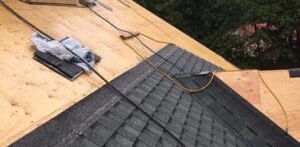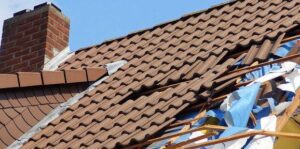As property owners and facility managers look for cost-effective ways to reduce cooling loads and extend the life of their roofs, many are turning to cool roof coatings. Before you get started, talk to a reputable roofing firm to assess whether a coating is the right option for your building but read on to understand why cool roof coatings are one of the simplest, fastest, and most impactful energy upgrades you can make.
What exactly is a cool roof coating?
A cool roof coating is a specialty membrane or liquid-applied material designed to reflect more sunlight and emit more thermal radiation than conventional roofing materials. Instead of absorbing the sun’s energy and turning it into heat, a coated roof reflects significant portions of the solar spectrum and releases what heat it does absorb more efficiently. That keeps the roof surface and the interior space beneath it noticeably cooler.
These coatings come in several chemistries (acrylic, silicone, polyurethane, and elastomeric types are common) and can be applied over a variety of substrates, including single-ply membranes, metal, built-up roofing, and modified bitumen. The right product and application method depend on roof condition, slope, climate, and building usage which is why a professional assessment matters.
How cool roofs save energy, the science in practical terms
Solar reflectance (albedo) and thermal emittance are the two performance metrics that define a cool roof. High solar reflectance means less solar energy is absorbed by the roof surface. High thermal emittance means the material gives off the heat it does absorb rather than trapping it.
Practically, this translates to:
- Lower roof-surface temperatures (often tens of degrees cooler than traditional dark roofs).
- Reduced heat transfer through the roof assembly into the building.
- Lower loads on air conditioning systems during peak sunny hours.
For commercial buildings with large roof areas and significant cooling demands, the aggregate energy savings can be substantial — often visible on utility bills during summer months.
Types of cool roof coatings and when to use them
- Acrylic coatings: Widely used, cost-effective, and easy to apply. Acrylics bond well to many substrates and provide solid reflectivity, but they do not perform as well in ponding-water conditions over the long term.
- Silicone coatings: Highly UV-stable and excellent in standing-water conditions. Silicones resist ponding water and have strong adhesion, making them a go-to for roofs that experience poor drainage.
- Polyurethane coatings: Known for abrasion resistance and toughness, often used where rooftop traffic or debris abrasion is a concern.
- Elastomeric coatings: These flexible coatings accommodate thermal movement and are useful for substrates that expand and contract.
A roofing firm will match the chemistry to your roof’s material, drainage conditions, and exposure profile.
Key benefits beyond lower energy bills
- Reduced cooling costs
This is the headline benefit. By lowering roof surface temperatures, cool coatings reduce heat gain and let HVAC systems run less, especially during peak daylight hours. For many facilities, this means measurable reductions in electricity use and demand charges.
- Extended membrane life
Heat and UV radiation accelerate degradation of roofing membranes. A reflective coating shields the membrane from direct solar exposure, slowing thermal cycling and UV-induced breakdown. In practice, coatings often add years to the service life of an existing roof and can delay expensive replacements.
- Improved indoor comfort
Buildings with poor insulation or older HVAC systems benefit from reduced interior heat gain. Warehouse workers, retail staff, and occupants of unconditioned spaces feel the difference on hot days, which can improve productivity and occupant satisfaction.
- Environmental and regulatory advantages
Cool roofs help reduce the urban heat island effect and lower greenhouse gas emissions tied to electricity generation. Many jurisdictions offer incentives, rebates, or recognition programs for reflective roofing solutions, and cool roofs can contribute toward green building certifications like LEED.
- Cost-effectiveness and low disruption
Compared to full roof replacement, coatings are typically less expensive and faster to apply. The process is non-invasive, usually completed with minimal disruption to building operations when applied by an experienced roofing firm.
The application process — what to expect
- Roof inspection and evaluation: The contractor assesses membrane condition, drainage, existing coatings, and necessary repairs. Coatings are most successful on roofs that are free of major leaks and structural issues.
- Repairs and surface prep: Any blisters, ponding areas, or damaged flashings are fixed. Surface cleaning (pressure washing or sweeping) removes dirt, oils, and loose materials. A primer may be applied where required.
- Masking and protection: Vents, skylights, and rooftop equipment are masked or protected for clean application.
- Coating application: The coating is applied using rollers, brushes, or spray equipment. Manufacturer-recommended thickness and number of coats are critical for performance and warranty compliance.
- Curing and final inspection: Coatings require time to cure; the installer performs a final walkthrough, checks for uniform coverage, and documents the work.
Longevity, maintenance, and warranty
A properly selected and applied cool roof coating can last 10–20 years depending on the product and conditions. Annual inspections and routine maintenance (clearing debris, checking flashings, and repairing punctures) help maximize life. Many manufacturers and roofing firms offer warranties that cover material failure and, in some cases, labor — read the fine print to understand coverage for ponding water or foot traffic.
Cost considerations and ROI
Upfront costs vary by coating type, roof area, and necessary repairs. However, incentives, utility rebates, and reduced energy and maintenance costs can often justify the investment in a relatively short period. For large commercial roofs, the payback period on energy savings alone can be compelling; when you add extended roof life and reduced HVAC wear, the economic case becomes stronger.
Interested in cooling your building and lowering energy costs? Contact a certified roofing firm at 118-35 Queens Blvd Forest Hills, NY 11375 (718) 414-6067 https://www.nycrenovators.com today for a roof assessment and a customized cool-coating proposal and start turning your roof into a high-performance, energy-saving asset.


